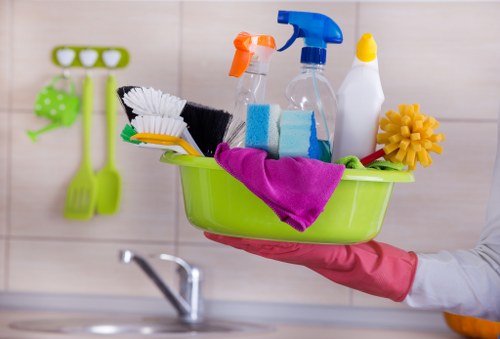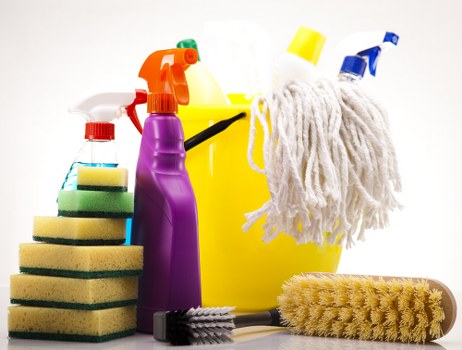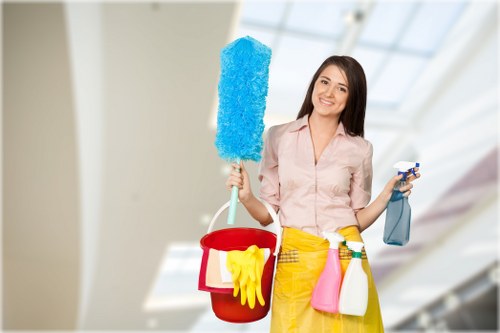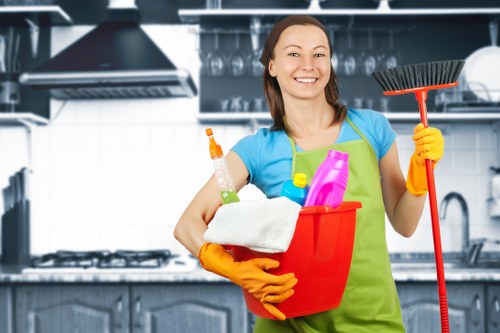Patio Cleaning in Pressure Washing
Why Regular Patio Cleaning is Essential

Patio cleaning plays a crucial role in maintaining the aesthetics and longevity of your outdoor space. Over time, patios accumulate dirt, mold, algae, and other contaminants that not only mar the appearance but can also cause structural damage.
Regular cleaning helps prevent the buildup of harmful substances that can degrade the materials your patio is made from, whether it's concrete, wood, or stone. By keeping your patio clean, you ensure a safe and inviting area for relaxation and entertainment.
Moreover, a clean patio enhances the overall curb appeal of your home, making it more attractive to guests and potential buyers. It reflects well on your property and indicates that you take pride in maintaining your living spaces.
The Benefits of Pressure Washing for Patio Cleaning

Pressure washing is one of the most effective methods for cleaning patios. This technique uses high-pressure water spray to remove stubborn dirt, grime, and stains that traditional cleaning methods might miss.
Advantages of pressure washing include its ability to quickly clean large areas, remove deeply embedded contaminants, and restore the original appearance of your patio without causing damage. Additionally, pressure washing is environmentally friendly, using just water and eliminating the need for harsh chemicals.
Another significant benefit is the prevention of slip hazards. Moss, algae, and other slippery growths can make your patio dangerous, especially when wet. Pressure washing removes these hazards, ensuring a safer environment for you and your family.
Understanding Different Pressure Washing Techniques

Soft Washing
Soft washing involves using lower pressure combined with specialized detergents to gently clean surfaces. This method is ideal for delicate materials like wood or painted surfaces that could be damaged by high pressure.
High-Pressure Washing
High-pressure washing employs powerful jets of water to tackle tough stains and heavy buildup. It's effective for durable surfaces like concrete and stone, where the force can remove ingrained dirt without harming the material.
Choosing the right technique depends on the type of patio surface and the extent of the cleaning required. Professional pressure washing services can assess your patio and recommend the most suitable approach.
Steps to Prepare Your Patio for Pressure Washing

Proper preparation ensures a successful pressure washing session and prevents potential damage to your patio. Here are the essential steps:
- Clear the area: Remove all furniture, potted plants, and other items from the patio.
- Inspect for repairs: Check for any damaged areas that need fixing before cleaning.
- Choose the right time: Select a day with mild weather to allow your patio to dry quickly after washing.
- Protect surrounding areas: Cover nearby plants and surfaces to shield them from the high-pressure water and detergents.
Following these steps will help maximize the effectiveness of the pressure washing and extend the life of your patio.
Environmental Considerations in Pressure Washing

Pressure washing can be an eco-friendly cleaning method when done responsibly. Here are some tips to minimize environmental impact:
- Use biodegradable detergents: Opt for cleaning solutions that are safe for plants and pets.
- Manage runoff: Direct water away from storm drains and natural water bodies to prevent contamination.
- Conserve water: Use the appropriate pressure settings to avoid excessive water usage.
- Recycle wastewater: Whenever possible, collect and reuse the water to reduce waste.
By adhering to these practices, you contribute to environmental preservation while effectively maintaining your patio.
Common Patio Cleaning Challenges and Solutions
Patio cleaning comes with its set of challenges, but with the right approach, they can be overcome:
- Stubborn Stains: Use specialized cleaners or a higher pressure setting to remove oil, grease, and other tough stains.
- Moss and Algae Growth: Apply eco-friendly fungicides before pressure washing to eliminate these growths effectively.
- Cracked Surfaces: Address cracks before cleaning to prevent water from seeping in and causing further damage.
- Weather Restrictions: Schedule cleaning sessions during optimal weather conditions to ensure the patio dries properly afterward.
Addressing these challenges proactively ensures a cleaner, safer, and more beautiful patio.
Maintenance Tips After Pressure Washing
Once your patio has been pressure washed, proper maintenance will help it stay clean and extend its lifespan:
- Regular Sweeping: Keep debris from accumulating by sweeping the patio regularly.
- Seal Surfaces: Apply a sealant to concrete or stone surfaces to protect against stains and moisture.
- Immediate Stain Removal: Address spills and stains promptly to prevent them from setting.
- Install Proper Drainage: Ensure water drains away effectively to avoid pooling and potential damage.
Consistent maintenance reduces the need for frequent deep cleaning and keeps your patio looking its best year-round.
Cost Factors in Professional Pressure Washing Services
Understanding the costs involved in professional patio cleaning can help you budget effectively:
- Size of the Patio: Larger areas require more time and resources, increasing the overall cost.
- Extent of Cleaning Required: Heavily soiled patios or those with large stains may incur higher fees.
- Type of Surface: Different materials may need specific cleaning techniques or products, affecting the price.
- Location: Accessibility and travel distance can also influence service costs.
Obtaining multiple quotes and understanding what each service includes can help you make an informed decision that fits your budget.
DIY Patio Cleaning vs. Hiring Professionals
Deciding between DIY cleaning and professional pressure washing depends on various factors:
- Expertise: Professionals have the training and equipment to handle different patio surfaces effectively.
- Time and Effort: DIY cleaning can be time-consuming and physically demanding, especially for larger patios.
- Quality of Results: Experts can deliver a more thorough and consistent clean, reducing the risk of damage.
- Cost: While DIY might seem cheaper initially, professional services can save money in the long run by preventing damage and reducing the need for frequent cleaning.
Assess your capabilities and the specific needs of your patio to determine the best approach.
Safety Tips for Pressure Washing
Pressure washing can be hazardous if not done correctly. Follow these safety tips to ensure a safe and effective cleaning process:
- Wear Protective Gear: Use gloves, goggles, and non-slip footwear to protect yourself from water jets and debris.
- Check Equipment: Ensure that your pressure washer is in good working condition and that all connections are secure.
- Avoid Electrical Hazards: Keep the pressure washer away from electrical outlets and avoid using it in wet conditions unless designed for such use.
- Be Mindful of Surroundings: Watch for pets, children, and fragile items that could be damaged by high-pressure water.
Adhering to these safety measures minimizes the risk of accidents and ensures a smooth cleaning experience.
Choosing the Right Pressure Washing Equipment
Selecting the appropriate pressure washing equipment is vital for effective patio cleaning:
- Pressure Washer Type: Electric vs. gas-powered: Electric models are quieter and suitable for smaller jobs, while gas-powered washers offer more power for large, tough cleaning tasks.
- Nozzle Selection: Different nozzles provide varying spray patterns and pressure levels. A 25-degree nozzle is commonly used for patio surfaces.
- Hose Length: Ensure the hose is long enough to cover your patio without frequent repositioning.
- Attachments and Accessories: Consider additional tools like surface cleaners or extension wands for enhanced functionality.
Investing in the right equipment ensures efficient cleaning and prolongs the life of your pressure washer.
Preventing Future Patio Dirtying
After a thorough pressure washing, implementing preventive measures can keep your patio cleaner for longer:
- Regular Maintenance: Schedule periodic cleanings to prevent the buildup of dirt and grime.
- Proper Drainage: Ensure water flows away from the patio to avoid standing water and related issues.
- Covering Surfaces: Use patio covers or umbrellas to protect against weather elements that cause staining.
- Trimming Nearby Vegetation: Keep plants and trees trimmed to reduce leaf litter and debris accumulation.
These strategies help maintain a pristine patio environment with minimal effort.
Final Thoughts on Patio Cleaning in Pressure Washing
Maintaining a clean patio through pressure washing not only enhances your outdoor living space but also adds value to your property. By understanding the various techniques, preparing adequately, and following proper maintenance practices, you can achieve a lasting clean that’s both visually appealing and safe.
Whether you choose to tackle the job yourself or hire professionals, prioritizing patio cleaning ensures a welcoming and enjoyable area for all your outdoor activities.
Ready to transform your patio?
Contact us today to book your professional patio cleaning service and enjoy a spotless outdoor space!